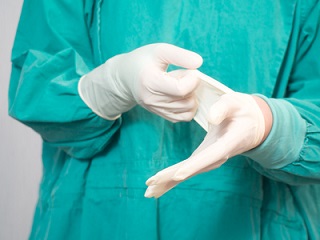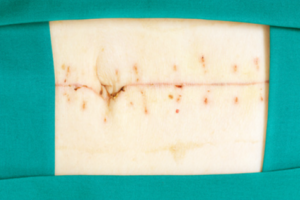Classification of Surgical Site Infections
December 15, 2016
Part 1 in a series exploring topics related to surgical site infections.
Surgical site infections (SSIs) are the most common hospital-acquired infections, accounting for 20% of total documented infections each year and costing approximately $34,000 per episode. SSIs are responsible for increased readmission rates, length of stay, reoperation, patient morbidity and mortality, as well as increased overall health care costs.
As wound specialists, many of us have an intimate knowledge of the sequelae of surgical site infections. We utilize understanding of dressing properties in the role of meeting tissue requirements based on detailed wound assessment and patient-specific needs such as causative pathogenic organism, documented sensitivities, etc. While identifying the type of SSI is not necessarily requisite for adequate treatment, it is important to have a cursory knowledge of how SSIs are classified. SSIs are placed into three categories, which are defined by extent or depth of infection.
Types of Surgical Site Infection
Superficial Incisional Surgical Site Infection – skin or subcutaneous tissue is involved, occurs within 30 days postoperatively, and must fulfill one of the following additional criteria:
- purulent drainage from incision with or without diagnostic laboratory testing (culture)
- isolated organisms from aseptically obtained fluid or tissue culture in incision
- at least one sign or symptom of clinical infection: localized pain, edema, erythema, warmth and the superficial incision is deliberately opened by a surgeon (unless culture of incision is negative)
- diagnosis of a superficial incisional SSI by a surgeon or attending physician
Deep Incisional Surgical Site Infection – involves deep soft tissues such as fascia or muscle within incision, occurs within 30 days postoperatively without implant, occurs within 1 year if implant is in place and infection appears to be directly related to surgical procedure, and must fulfill one of the following additional criteria:
- purulent drainage from incision but not from the organ/space of the site
- dehiscence or deliberate opening by the surgeon from the deep incision when the patient has at least one of the following signs or symptoms of clinical infection (fever greater than 100.4°F, localized pain or edema, unless culture is negative)
- abscess or other evidence of infection involving the deep incision is found during examination of incision, reoperation, or pathologic or radiologic exam
- diagnosis of a deep incisional SSI by a surgeon or attending physician
Organ/Space Surgical Site Infection – involves any part of the anatomy other than the incision, occurs within 30 days postoperatively without implant, occurs within 1 year if implant is in place and infection appears to be directly related to surgical procedure, and must fulfill one of the following:
- purulence from a drain that was placed via stab incision into the organ/space (infection of drain site is not an SSI)
- isolated organisms from aseptically obtained fluid or tissue from the organ/space
- abscess or other evidence of infection involving the deep incision is found during examination of incision, reoperation, or pathologic or radiologic exam
- diagnosis of an organ/space SSI by a surgeon or attending physician
*If both superficial and deep layers are involved, or if organ/space SSI drains through incision, classification will be deep incisional SSI.
Regulatory Efforts to Address Surgical Site Infections
Due to the deleterious effects on the patient, caregiver, and institution involved in the patient's care, numerous health care and regulatory organizations have launched large-scale efforts aimed to impact the occurrence of SSIs. Most have included various basic practices that institutions already widely utilize, while others have recommended the adoption of specialized approaches for when basic practices have not been sufficient in controlling SSIs. "Bundles" are often used, which refers to packaged groups of interventions commonly instituted to systematically address patient-specific risk factors, and encompass multiple aspects of prevention at various stages of patient care.
Understanding the basis for classification of SSIs will allow us to explore evidence-based strategies and rationales for prevention, which we will discuss in our next installment. And I'll end with a quote that seems quite fitting for the perpetual student in all of us:
"My mind rebels at stagnation; give me work, give me problems to solve." –Sherlock Holmes
About the Author
Samantha Kuplicki is board certified in wound care by both the American Board of Wound Management as a Certified Wound Specialist (CWS) and by the Wound, Ostomy and Continence Certification Board as a Certified Wound Care Nurse (CWCN) and Certified Foot Care Nurse (CFCN). She serves on the American Board of Wound Management (ABWM) Examination Committee and also volunteers for the Association for the Advancement of Wound Care.
The views and opinions expressed in this blog are solely those of the author, and do not represent the views of WoundSource, HMP Global, its affiliates, or subsidiary companies.












Follow WoundSource
Tweets by WoundSource